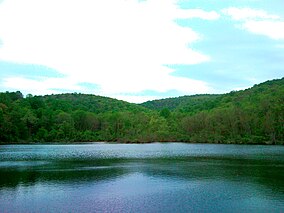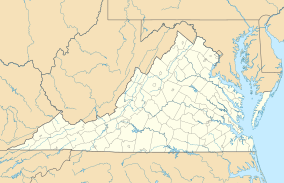G. Richard Thompson Wildlife Management Area
| G. Richard Thompson WMA, Virginia, USA | |
|---|---|
IUCN category V (protected landscape/seascape) | |
 Lake Thompson with the Blue Ridge in the background | |
| Nearest city | Front Royal |
| Coordinates | 38°59′5″N 77°59′31″W / 38.98472°N 77.99194°W |
| Area | 4000 acres (1618 ha) |
| Governing body | Virginia Department of Game and Inland Fisheries |
G. Richard Thompson Wildlife Management Area, one of the richest botanical areas of Virginia's Blue Ridge Mountains, is a protected area located primarily in Fauquier County, Virginia, with small encroachments into both Warren and Clarke Counties. Its two parcels together total nearly 4,000 acres (16 km2) in size, rising in a series of steep stages to the crest of the Blue Ridge Mountains, which the area's northwestern boundary closely follows. Elevations on the property range from 700 feet (210 m) to 2,200 feet (670 m) above sea level. There are several different habitats, including second-growth deciduous forest, open grassy clearings, and cool seepage swamps at the headwaters of mountain streams.
Most of the forests found on the land are hardwoods, but there is some open land at the bottom and near the top of one tract. The remains of growths of fruit trees may still be seen at the lower portion of the area. A number of major streams and unusual spring seeps may also be found there, as may several outcropings of rock. The scenic Appalachian Trail crosses through its boundaries along the crest of the Blue Ridge, and the WMA contains several side trails that provide access to the area.
In the spring, the area is renowned for its large stands of Trillium grandiflorum, reputed to be the largest on the east coast. Other species blooming in these rich woods in early May include Showy Orchis, Sand Violet, Conopholis americana, Yellow Lady Slippers etc. In the seepage swamps grow several species that are usually associated with more northern regions or higher elevations of the Appalachians like Canada Mayflower.



